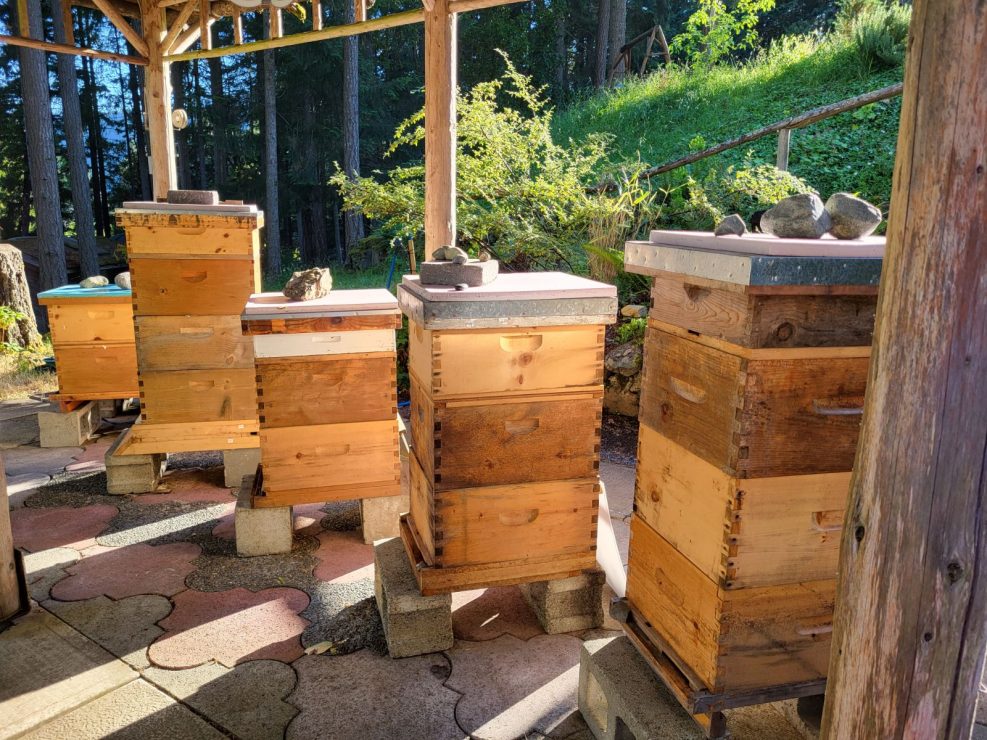“If we save the bees, we’re actually saving ourselves,” says local beekeeper

Photo by Lisa Mellett.
I’m a big food lover and an even bigger fan of all things sweet. For this year’s Climate Issue, I decided to taste test some local honey. I ended up learning a lot about the relationship between local production and climate change, my tolerance for sugar, and the wonderful variety of honeys in our region.
First, I tried honey from Queen Bee Farms & Apiary. This honey is golden and bright, with a classic, smooth consistency. It has a distinctly sweet and flowery taste that is hard to identify any further. There are also many layers of flavour that give this honey a well-rounded feeling, which I love.
If I were to assign this honey a specific purpose, it would be to sweeten oatmeal. Its floral flavour makes Queen Bee Farms’ honey the perfect addition to a breakfast of oats. This honey would be the ideal garnish and pair nicely alongside fruits or alone with milk.
Next, I tried the blackberry flower honey from Red Queen Apiaries. This honey is much lighter than Queen Bee’s, and also runnier. It is the sweetest of the three that I tried, with a distinctly fruity flavour. It’s difficult to say whether I imagined this because I knew the name of the honey, but it does have a very subtle berry flavour.
This honey would sit perfectly on top of a pancake or waffle because of its light and smooth consistency. I’d be delighted to try it with whipped cream on a blueberry pancake, even perhaps mixed into the batter if I had some to spare.
Lastly, I sampled Babe’s Honey Farm’s wildflower honey. This one is thick and, while smooth, has the most noticeable texture. It has a golden colour nearly identical to Queen Bee Farms and is very slightly cloudy. Babe’s honey has a distinct flavour that I can only describe as “farm-y,” but certainly not in a bad way; sort of like if the honey was collected near a bale of hay or a cheerful goat.
I can easily picture this honey on a thick slice of toast with butter. It would shine in a simple, classic honey scenario because of its intensely natural, agricultural flavour. I can only imagine how delicious it would be when the honey melted and mixed with the warm butter.
After all of this sampling, I was curious about honey and the work that goes into its production. Luckily, I had the opportunity to speak with Lisa Mellett, the owner and operator of Queen Bee Farms.
Mellett has been beekeeping for nearly ten years, ever since her son started keeping bees as a part of his environmental studies courses at UVic. She has a variety of pollinator-friendly plants on her farm, located off the Malahat, where she produces teas, beeswax products, and much more.
Climate change has had a negative impact on local honey production, said Mellett. “We’ve experienced a lot of drought in the summer,” she said. “Because the weather is getting drier and hotter sooner, a lot of [plants] will flower quicker and have a shorter bloom time.” This makes the pollen and nectar collection period shorter for the bees, who have to work harder to produce their honey.
Bees also need access to clean water, explained Mellett. “A lot of people don’t realize [that] bees need water as much as they need pollen and nectar,” she said. Drought can affect their ability to operate.
Mellett encourages people to buy local honey, which supports the important work that beekeepers do to protect pollinators while grappling with the effects of climate change. “We’re protecting the environment for them, but if we do that, we’re also protecting it for ourselves,” she added.
I encourage all of you to branch out and try some local honey, adding a bit of sweetness to your life while helping out our buzzing friends.








